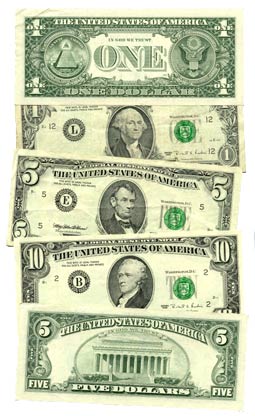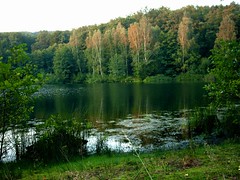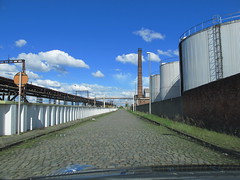| New Orleans, 1907: Advertisement for water filters by Crescent Filter and Specialty Co. (Photo credit: Wikipedia) |
If all you can find is muddy water you will need to create a filter which will clean it of all the sediment and debris. Filtering the water simply means removing all visible dirt and debris which will help make it safer for drinking. Harmful bacteria and microbes will still exist in the water but the filtering process will make it taste a little better. To begin filtering water you will need to have container to keep it in. A bottle will work well. By cutting the bottom of the bottle off you will be able to use the top as a makeshift funnel. For the best results using this method stuff some cloth material into the funnel to trap debris. Using a can will work, too. For the water to be able to run through you will need to punch a few holes into the bottom of the can with your pocket knife. Then it's just a matter of letting the water fall through the holes trapping anything else inside the can.
Filtering water in the wilderness can be achieved several different ways. Without a bottle or a can you can consider this method in an emergency. You can place an item of clothing or cloth material directly over the container as a filter. You should be able to get rid of some particles with this method. Use what nature provides. Rocks and sand in alternating layers will make an excellent filter. Using more layers will create a better filter. Bark made into the shape of a cone can be used in place of bottles and cans. Layer the rocks and sand inside the cone. To hold it all together use a piece of string at the bottom of the cone. By thinking ahead and putting small rocks at the bottom you will be able to stop it from all falling apart. Use both fine and coarse layers in the filter, alternating between the two. Sand pouring out of the bottom of the cone needs to be avoided. This isn't as hard as you might think. Use a non-poisonous grass, small pebbles or some cotton material. When your filter is finished start pouring your collected water into it. Catch the water in a container after it has gone through the filter. Check the filtered water. If it's not clear you will need to filter it again.
Keep doing this until you have some clear water. Even though you now have clear water there are still little nastiness in there that need to be gotten rid of. The water still needs to be purified. The filtered water will still probably contain bacteria that could make you sick. Purifying water is simple. Boil it over a fire for five minutes or use a water purification tablet.
Learning how to filter water in the wilderness is an essential outdoor survival skill. You can keep yourself alive by knowing how to make your water fit for drinking. This will keep you hydrated while you wait for the rescue party. Make sure you can filter water by practicing when you don't need it. It's a simple skill that is literally a life saver. As an avid camper I choose to acquire the skills I might require to keep my family and myself alive if things go wrong.

























